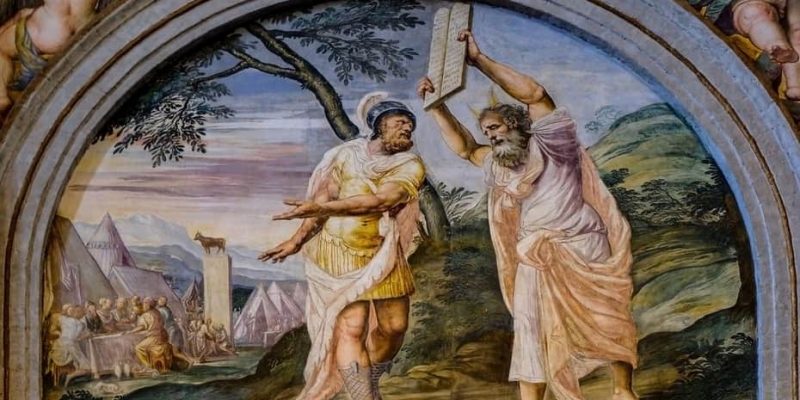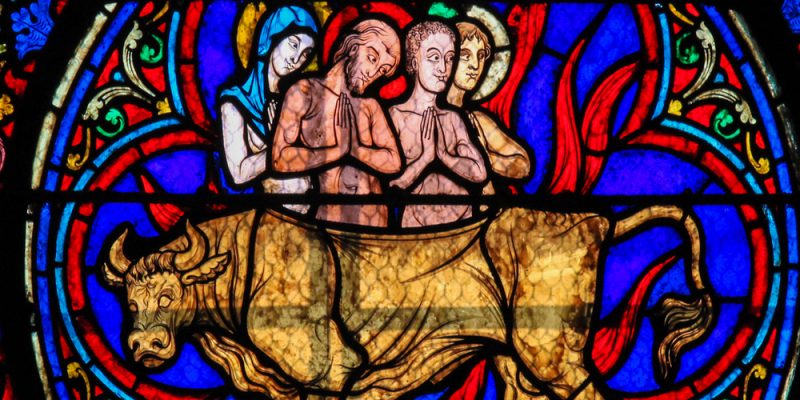We explain what idolatry is inside and outside the religious context. Also, why it is considered a serious sin according to the Bible.

What is idolatry?
Idolatry is excessive worship of physical objects, people, or ideas in a religious context. The concept comes from the Greek terms eidolon“image” or “figure”, and latris“devoted.” It is the devotion that attributes supernatural powers to material objects such as statues, amulets or images.
In many traditions, idolatry It is considered a serious deviation, especially in the doctrines of monotheistic religions such as Judaism, Christianity and Islam. In these cases, the sin lies in diverting the worship of God towards earthly elements created by human beings.
A common example of idolatry is worship of images of saints, sanctuaries, relics or amulets. Devotees consider the physical object itself to have supernatural abilities that can directly affect people. In some cases, the healing powers that a statue of the Virgin Mary can have are highlighted. In others, the protective power of amulets against illness or discomfort. Some rituals of devotion to certain saints or the cults of Saint Death are also considered idolatrous.
Characteristics of idolatry

Among the main characteristics of idolatry we can highlight:
- Worship of objects or images. It involves revering material objects, whether it is a statuette, a painting, a statuette, an amulet or a religious relic, among others.
- Attribution of supernatural powers. The worshiped object or image is believed to have the ability to affect the lives of devoted people.
- Deviation from monotheism. The devotion that should be directed to God is diverted towards earthly or human-created elements.
- Creation of rituals. The worship of an object or image may be accompanied by specific rituals, ceremonies and practices aimed at achieving the performance of the idolized element.
Idolatry for religions

For monotheistic religions, Idolatry occurs when religious worship is given to anything other than the only god. Even the prohibition of idolatry is the second of the Ten Commandments that are part of the Old Testament of the Bible (fundamental in Christianity and Judaism), and this practice is also condemned in the Koran (the holy book of Islam). In this sense, any pagan cult incurs this type of sin.
However, The definition of what practice is or is not considered idolatry can be a source of disagreement. On many occasions, different churches within the same religion emerged from practices that were denounced as idolatry. For example:
- Christianity. The Protestant Church of Christianity rejects the worship of images of saints and Jesus, and keeps its churches without this type of decoration. Instead, the Catholic Church considers them worthy of commemoration as part of divine power.
- Islam. In some branches of Sufism, Muslims visit shrines or tombs of religious figures, where they perform acts of devotion (offerings and prayers). This practice is denounced by some orthodox Islamic scholars as a deviation from the worship of God.
- Judaism. Some Jewish communities that lived during the Middle Ages in the Caliphate of Córdoba (present-day Spain) were influenced by Muslim culture and integrated some worship practices into religious images. This was denounced by other contemporary Jewish communities as a form of idolatry.
Biblical examples of idolatry

The question of idolatry is one of the topics discussed in the sacred books of different religions.
A canonical example of idolatry is referred to in the Bible, in the episode in which Moses ascends Mount Sinai (Exodus 32:4) to receive the Ten Commandments of God. During his absence, The Israelite people melt down all the gold they can get to erect the statue of a calf and proceed to worship it as if it were God himself. Upon descending from Sinai, the prophet Moses becomes enraged and destroys the effigy to dust. As punishment, he forces the Israelites to drink the gold dust from the calf in water.
Another important example of idolatry in the history of Judaism is the episode of idol worship during the First Temple period in Jerusalem. During this stage, there were several occasions when the Jewish people strayed from the worship of the one God towards the worship of idols and pagan gods.
According to the biblical account in the Second Book of Kings, Manasseh erected idols within the Temple of Jerusalem, and even placed an image of Asherah (a Canaanite female deity) in the same compound. This idolatry was seen as a serious violation of the covenant between God and his people, and is considered one of the factors that led to the destruction of the First Temple and the Babylonian exile.
References
- Ellwood, RR and Alles, GD (Eds.). (2007). Images, Icons, Idols in Religion. The Encyclopedia of World Religions. Facts on File.
- Halbertal, M and Margalit, A. (1998). Introduction. Idolatry. Harvard University Press.
- The Editors of Encyclopaedia Britannica. (2024). Idolatry. Encyclopedia Britannica. https://www.britannica.com/





